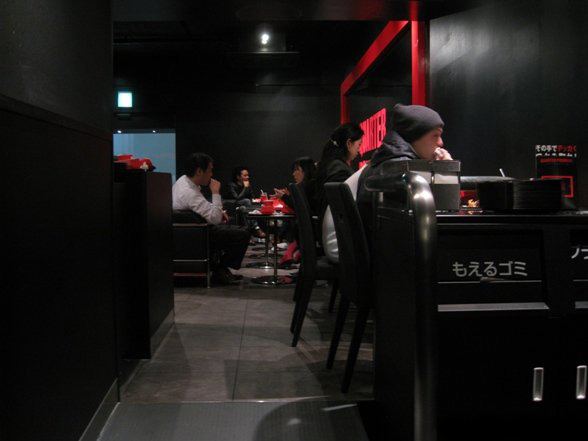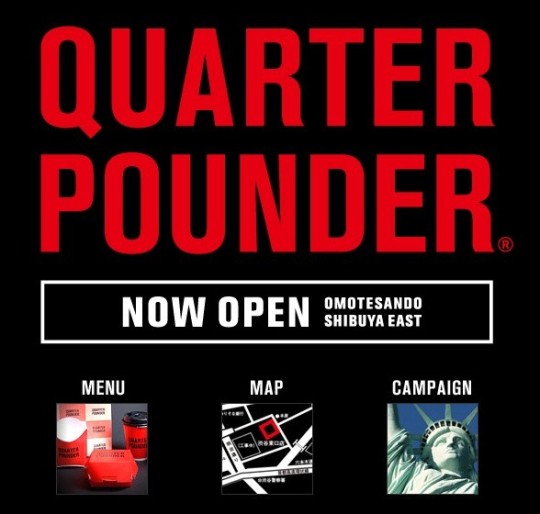
Breasts and Cancer: Ads too sexy?

However, she get’s an A for effort and a D for, well, her boobs.
– Trevor Lee
Trevor, a brand strategist and planner, believes a brand is the most important asset a company must manage to create a sustainable competitive advantage. To him, almost everything else falls under the brand umbrella.
Trevor holds an M.Sc. in Strategic Marketing from Cranfield School of Management, and a B.A. from the University of Waterloo.
Gung Hay Fat Chow 2009
Definium Design would like to wish everyone a message of fortune, happiness and good health this new year seaon.
Happy Chinese New Year
“Gung Hay Fat Choy”
Dinning in the Dark! – A new restaruant rage!

Supposedly this is already a big hit in Europe, Australia, LA , NY and now coming to Canada – a “dinning in the dark” concept puts food eaters in the complete dark for a sensual food and eating experience.
Patrons are blindfolded as soon as they step in, lead to the table in the dark order and eat in the dark. The only time you get to see is when you go to the washroom, which you are lead to while your blindfolded, and of course when you leave the establishment. I wonder how would you pay in the dark?
Is this an actual dinning fad thats here to stay or a momentary gimmick to get people to try out a new restaurant experience.
Thank Kat for the piece of info!
For more information click here.
The Presidential Inauguration in 3D

http://www.cnn.com/SPECIALS/2009/44.president/inauguration/themoment/
Change is here!
With President elect Obama in the Whitehouse the rest of the world is in hopes that positive change will come for the economy, the environment, world politics, and social and judicial issues.
While Obama will be busy making changes, Microsoft has been busy changing the way we search for photos online. CNN and Microsoft brings the inauguration to your screen with this amazing software called, Photosynth. Photosynth creates 3D-photo based environments with 2D images.
Try it to see what its all about.
“I love how you can zoom in on the secret service agents along the dome.”
On Nightmares… Freud I Challenge You

According to Freud, nightmares were the result of masochistic wish-fulfillment. The basis of this curious notion was Freud’s unshakable conviction that every dream represented the fulfillment of a wish. “I do not know why the dream should not be as varied as thought during the waking state…” wrote Freud, tongue-in-cheek. For his own part, he continued, “I should have nothing against it…There is only a trifling obstacle in the way of this more convenient conception of the dream; it does not happen to reflect reality.” If for Freud, every dream was nothing but the fulfillment of a wish, the same thing must be true for nightmares: the victims of nightmares must secretly wish to be humiliated, tortured or persecuted.
http://www.lucidity.com/EWLD10.html
According to me, nightmares scare the shi*t out of me leaving me in a cold sweat and going ‘what the heck was that?’. Freud was a psychologist and had a psychoanalytical mind like no other but I do have to disagree that nightmares are a wish fulfilment – no matter how basic or complex this fulfilment is. Last night I had a bad dream, which I won’t go into detail about but it was scary, and I don’t ever want to see any part of that being fulfilled. Who wants to see their nightmares realized, no matter how scary, odd or crazy the are, whether you are being chased by monsters, eaten alive by a giant zebra or swallowed whole into a lake of red Thai curry.
Freud, you might be wrong on this one.
Japan is McLovin' the "No-Brand" 1/4 Pounder



No golden arches, no clowns or brightly coloured, indigestible fry guys McDonald’s Japan has decided to go black, red and cool with their limited menu pilot stores.
Well when you thought the big corporates are bland and boring, it’s nice to see a family oriented franchise do something a little unconventional.
Will this minimalist Boy’sco concept work? I hope so! Hoping that they will start opening up stores in Vancouver just like this. We do have a booming young Japanese population looking for a taste of home!
“McDonalds Japan is testing the waters of no-brand marketing with newly opened Quarter Pounder stores in Tokyo.
Generic packaging, minimalist decor, a two-item menu – and not a clown in sight! That goes for the website as well. McDonalds Japan’s dip into no-brand marketing comes as quite a shock to those who see the global burger master as the poster child for brand name advertising.
Word is, curious customers are lining up to get into Quarter Pounder’s stark black & red shops. When they finally squeeze through the door, menu choices can be arrived at by a coin flip: a Quarter Pounder with Cheese Set for 500 yen (about $5.15) or a Double Quarter Pounder with Cheese Set that goes for 600 yen (about $6.20). It’s been noted by some that McDonalds burgers are smaller in Japan, so take that into account before judging whether either set is a good deal.
That’s it! No shakes, no pies, no super-sizing, no Happy Meals. Not even a cheery “fries with that?” since they come included with each set.”
Will McDonald’s Quarter Pounder concept work? And, how long before trend-savvy Tokyoites realize that beneath the shiny new wrapper is the same old burger?
How much energy does Googling burn?

Until now, it was a rarely pondered question: Between the virtual bookends of someone searching for revealing pictures of Lindsay Lohan online and a search engine producing said pictures, how much energy is consumed?
Thanks to an Internet mini-controversy this week, inquisitive minds now have a pretty good approximation: 0.0003 kilowatt hours.
A recent story in The Sunday Times of London focused on the research of Harvard University physicist Alex Wissner-Gross, who studies the energy use associated with Internet search engines. Apparently taking some liberties with the scientist’s work, the story claimed that two Google searches produce roughly the same amount of carbon dioxide as boiling a kettle for a cup of tea.
Dr. Wissner-Gross quickly shot back this week, telling a technology website that his work has nothing to do with the ubiquitous search engine and that his findings instead showed it takes an average of 20 milligrams of carbon dioxide a second to visit a website – no mention of Google; no mention of kettles. By then, however, the blog mill had already caught on to the story, and the Web was abuzz with musings about the link between dead trees and search results.
However, the most interesting response to the story came from Google itself, which went about analyzing exactly how much energy a single search uses.
Urs Hölzle, Google’s senior vice-president of operations, countered on the company’s official blog that the average search time is about 0.2 seconds, meaning the servers that do the heavy lifting work on a query for only thousandths of a second. Mr. Hölzle said that in the time it takes to run a Google search, the user’s personal computer consumes more energy than the company does to answer the query.
In addition to the work performed before the search request, Mr. Hölzle produced an estimate of 0.0003 kilowatt hours of energy for each search, equivalent to about one kilojoule.
“For comparison, the average adult needs about 8,000 kJ a day of energy from food, so a Google search uses just about the same amount of energy that your body burns in 10 seconds,” Mr. Hölzle wrote.
While the numbers make for interesting hypothetical arithmetic, it is the speed with which Google produced them that is perhaps more telling. Google’s energy consumption aside, the company’s co-founders, Larry Page and Sergey Brin, are known for their support of myriad environmental initiatives, and Google wasted little time responding to The Sunday Times’s article.
The company also provided an estimate of how much carbon dioxide a single search is equivalent to: 200 milligrams. Using tailpipe emission standards, Mr. Hölzle estimated that an average car driven one kilometre generates as many greenhouse gasses as 1,000 Google searches.
Mr. Hölzle did not mention that Google’s websites receive hundreds of millions of search requests a day. However, even those numbers don’t bring the company anywhere near the energy consumption of firms in other industries, such as automotive or manufacturing. And Mr. Hölzle does point out that, before the Internet age, recovering information would have involved travelling to the local library and looking it up.
www.globemail.com
http://www.theglobeandmail.com/servlet/story/RTGAM.20090117.wGoogle17/BNStory/International/
What a Difference Eight Years Makes: an Illustrated Tale
The Atlantic takes a sober yet playful look at how things have changed in the last eight years under the stewardship of one George W. Bush. The good news? More billionaires! The bad news: more fat people.




 Copyright © 2009 All Rights Reserved
Copyright © 2009 All Rights Reserved